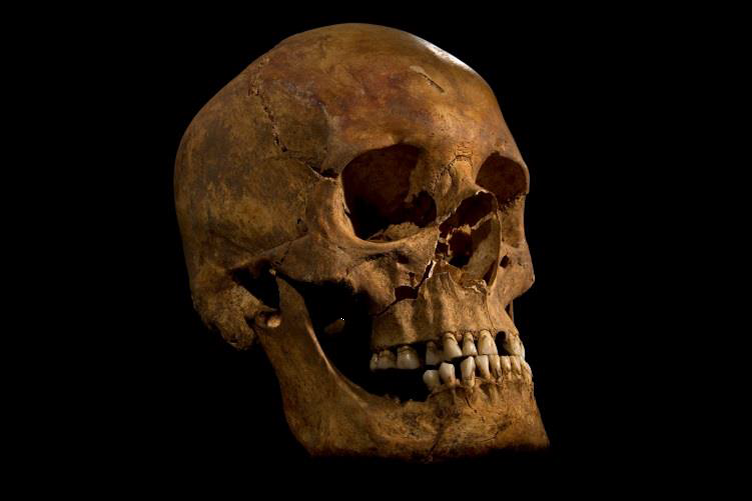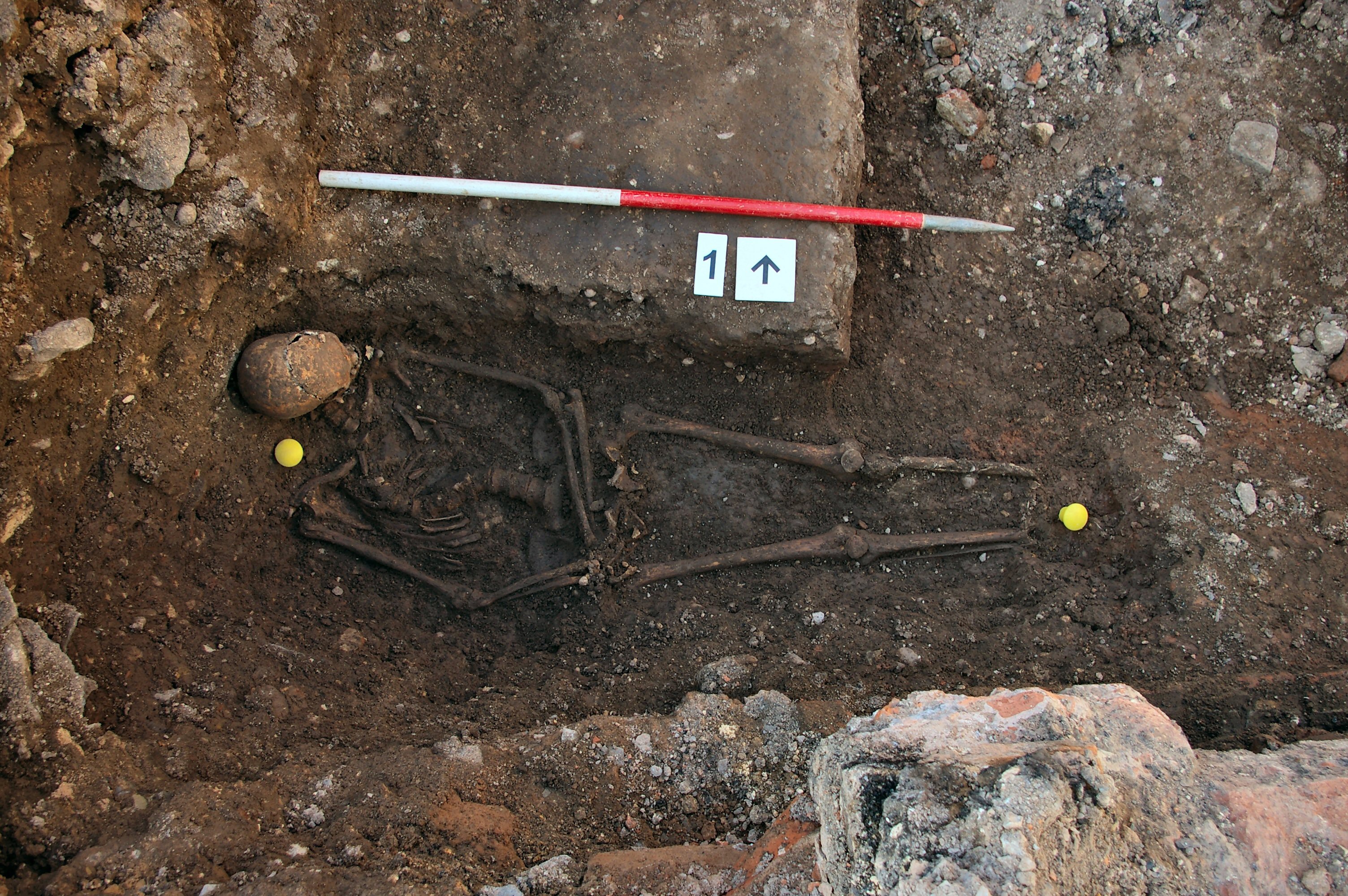Richard III Really Ate (and Drank) Like a King

Richard III ruled England for just two years and two months before he was killed in battle in 1485 at age 32. And yet, during his short time wearing the crown, Richard certainly ate like a king, a new study finds.
The wine flowed generously at King Richard's table, and plates of game birds and fresh fish were plentiful, according to an analysis of his teeth and bones, published online in the Journal of Archaeological Science on Aug. 16.
Two years ago, archaeologists hunting for Richard's long-lost body discovered a promising candidate: a battle-scarred skeleton in a hastily dug grave in the ruins of a monastery under a parking lot in Leicester, England. Follow-up DNA tests offered more proof that the bones indeed belonged to the king, and further studies on the remains revealed intimate details about Richard's life. (For example, he suffered from spine-curving scoliosis and had a roundworm infection.) [Gallery: The Search for Richard III]
Bones and teeth
To look for clues about Richard's diet, the excavators from the University of Leicester sent samples of Richard's teeth, femur and ribs to Jane Evans, a research scientist with the British Geological Survey.

"It was well preserved, which was good," said Evans. "The teeth were in good condition, and the bones still had their protein structure in them. Archaeologically, it was a good skeleton."
Bones and teeth can store a wealth of information about a person's lifestyle. By measuring the concentration of certain isotopes (which are variants of a particular element) in skeletal remains, archaeologists can find out what types of food people ate, where they lived and what kinds of pollution they were exposed to.
Sign up for the Live Science daily newsletter now
Get the world’s most fascinating discoveries delivered straight to your inbox.
Any isotopes locked in the teeth — which stop growing in childhood — can reveal information only about a person's early life. Bone, meanwhile, is living tissue that continually regenerates itself. A large bone like the femur takes a relatively long time to renew itself completely, and its isotopic concentrations represent an average of the last 10 to 15 years of a person's life, Evans said.
Meanwhile, a small bone, such as a rib, renews itself more quickly, and becomes a time capsule of the last two to five years of a person's life. In Richard's case, the rib bone's chemistry nicely corresponds to the short time he spent on the throne — and reflects his taste for luxury foods.
"Yes, he was an aristocrat before he was a king, but to become king was to be elevated yet again," Evans told Live Science.
Fancy feasts
The analysis of Richard's rib bone showed that there was a significant shift in the values of nitrogen and oxygen isotopes late in Richard's life, Evans said.
Nitrogen isotopes are natural tracers of the flow of energy through ecosystems. Higher concentrations of certain nitrogen isotopes are a sign of a diet rich in animals that have a relatively high place in the food web — such as wildfowl and freshwater fish. During Richard's time, game birds such as swan, crane, heron and egret would have been on the menu at royal banquets.
Because of Christian fasting rituals, people also would have been eating more fish during this era while they abstained from meat (perhaps for up to a third of the year), Evans and colleagues wrote. While the poor would have eaten cheaper, abundant fish, such as herring, Richard would have been served more nitrogen-rich freshwater fish, such as pike, the researchers said.
Oxygen isotopes, meanwhile, reflect the chemistry of the local drinking water. A change in these levels would typically be interpreted as a sign of relocation.
"Traditionally, if oxygen values change, we assume that that's because someone moved," Evans said. "The joy, really, of working on a historical figure is there are documents about exactly where he was."
Historical records suggest Richard lived exclusively in eastern England at the end of his life, so Evans and colleagues instead attributed the oxygen change in Richard's rib to his increased consumption of wine. [Images: New Dig at Richard III's Rediscovered Grave]
The wealthy were the only ones who could afford to make wine a staple of their diet during this time — and they drank a lot of it. The authors of the study note that wine made up 21 percent of the food expenditures at the Duke of Buckingham's estate from 1452 to 1453. By looking at the oxygen values in modern wine (since no bottles of medieval vintage were available), the researchers concluded that about a quarter of the oxygen deposited in Richard's bones came from wine and the rest was from local water.
Early travels and lead exposure
The chemistry of Richard's bones and teeth also supports historical records about where the king lived throughout his life. He was born in 1452 in Fotheringhay Castle in Northamptonshire, eastern England, but details about his early childhood are spotty.
Historical texts suggest Richard had perhaps spent some of his boyhood in western Britain. There is a record of the future monarch living at Ludlow Castle in Wales in 1459. The elevated strontium and oxygen isotope levels in Richard's teeth indeed suggest he was living in an area with higher rainfall and older rocks — which both point to western Britain. But the chemistry of Richard's femur shows that he moved back to eastern England as a teen or young adult.
Lead pollution was considerably higher in medieval England than it is today and that was also clear in Richard's bones. People were exposed to the toxic heavy metal from piping, pewter drinking vessels, makeup and even wine sweetened with lead acetate, Evans said.
"The study aligns nicely with what we think we know about Richard's life," said Joan Brenner-Coltrain, who heads the stable isotope research laboratory at the University of Utah. "It is highly likely that Richard’s diet changed to include wine and an increase in high-status animal protein with his ascent to the throne as suggested by the authors," added Brenner-Coltrain, who was not involved in this research.
Nonetheless, she had some concerns. For example, the study would have benefited from an analysis of more than one rib and femur sample, Brenner-Coltrain said. It's not clear how variable the isotopic values would be across several ribs and the different parts of a single rib (the shaft versus the rounded end), she added in an email to Live Science.
The amazing discovery of Richard's body renewed popular interest in the king made infamous by Shakespeare. The new findings are even getting a spot on primetime TV: A documentary called "Richard III: The New Evidence" aired on the BBC's Channel 4 on Aug. 17 at 9 p.m. BST.
In addition to a scientific specimen, Richard's body has become an object of controversy. Richard III was the last king of the House of York. After his death during the Battle of Bosworth at the end of the War of the Roses, Henry Tudor ascended to the throne. Some Richard enthusiasts fought for the king to be reburied in York, England. But in May, a court approved plans to re-inter Richard at Leicester Cathedral in England. His body is expected to be reburied in March 2015.
Follow Megan Gannon on Twitter and Google+. Follow us @livescience, Facebook & Google+. Original article on Live Science.











